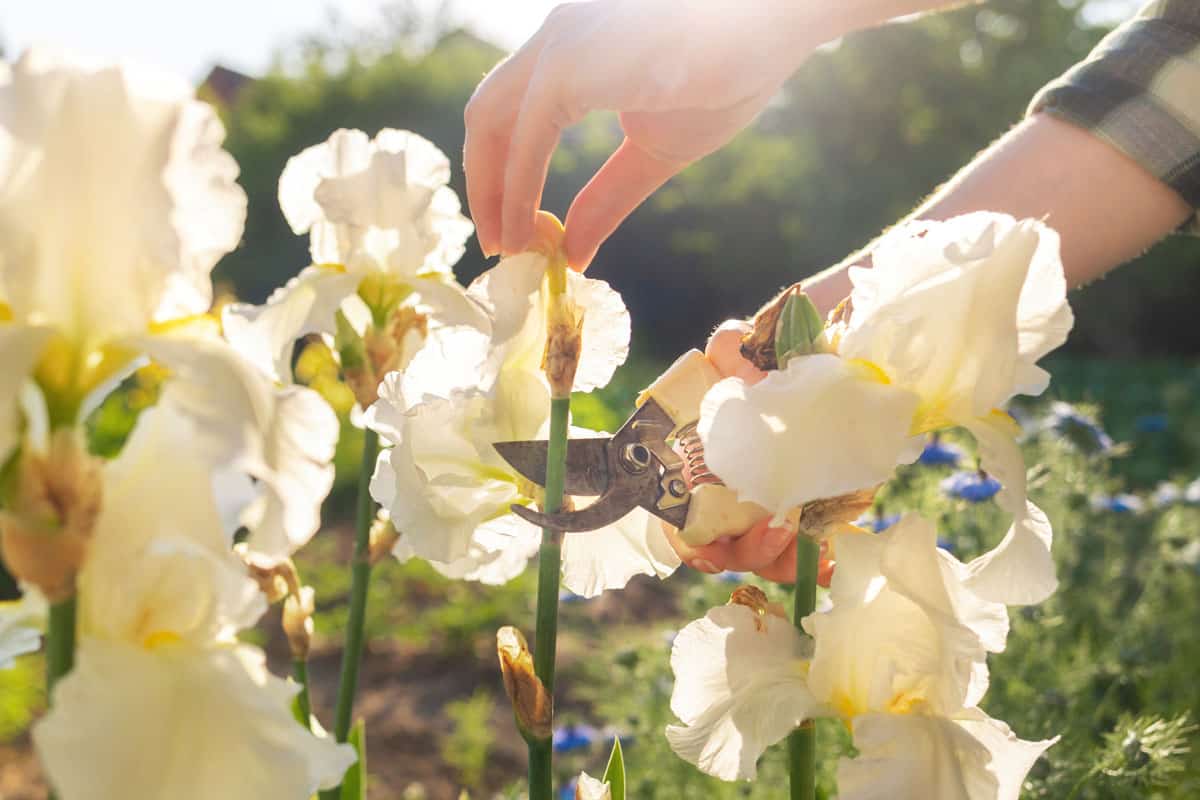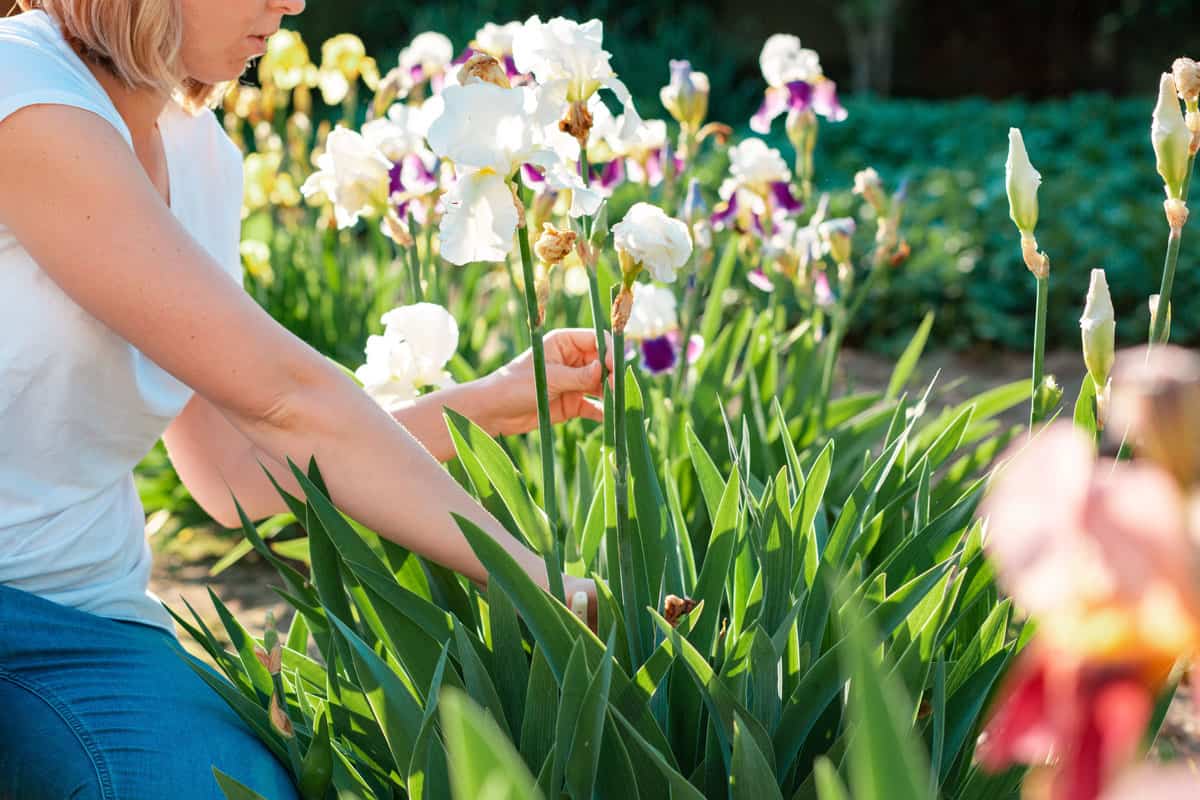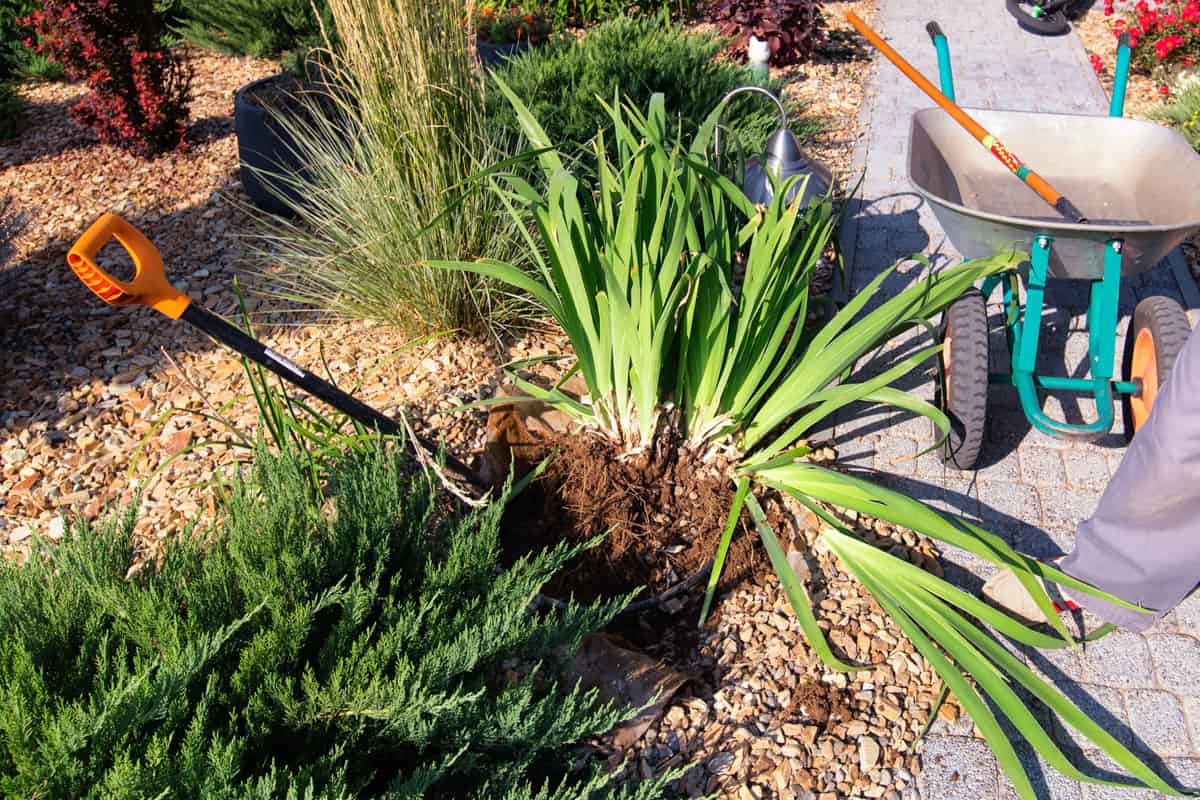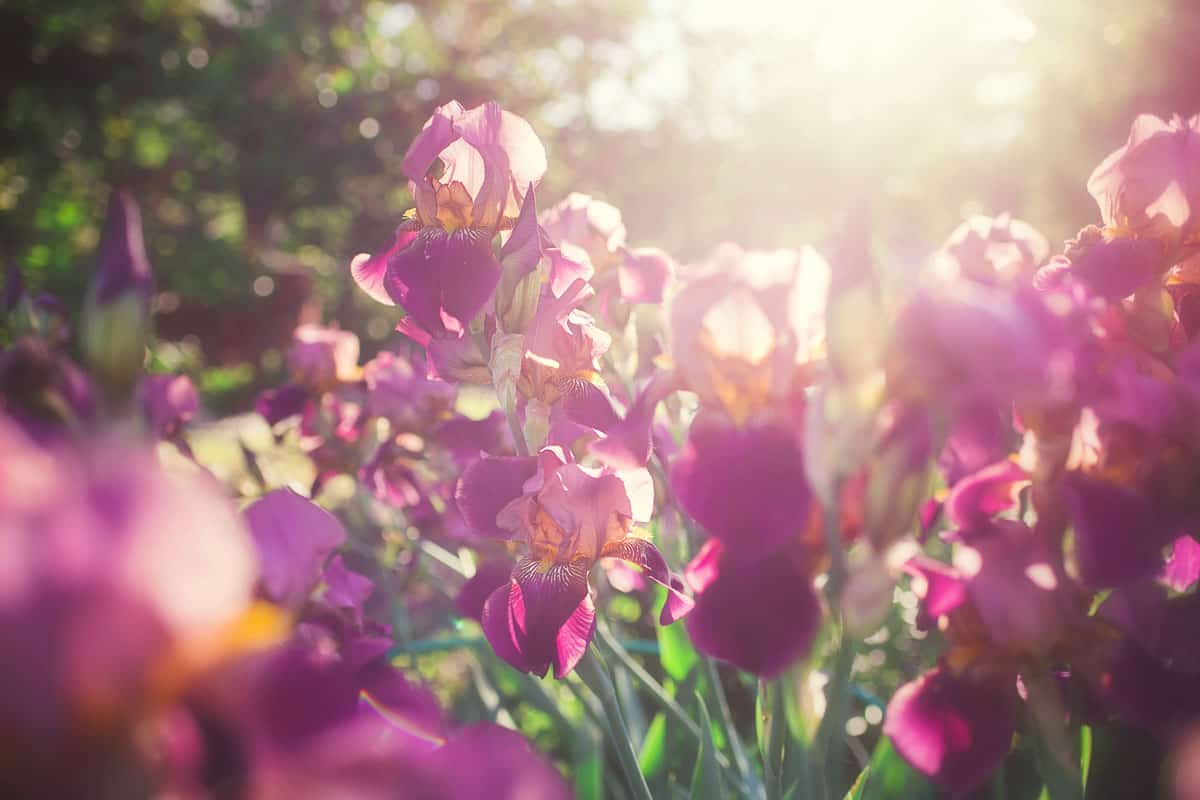Irises produce colorful flowers that will require less maintenance. However, cutting and dividing the plant is critical if you want more blooms and healthy leaves. In this article, we have gathered useful information on what to do with irises.
Cut irises in the fall after their blooming period. Cutting is vital to keep irises healthy to produce more flowers and greener leaves. Dividing is a must if blooming slows down. The time to divide the irises is when they become dormant in late summer.
Cutting and dividing is an easy gardening task that will surely be worthwhile. It is a big help if you cut and divide at the right time, so your irises follow their normal cycle. Read along to understand the significance of cutting and dividing for irises.
![beautiful flowers of iris on the mountain province, sun lit photo of iris flowers, When To Cut Back And Divide Iris [And How To Do That]](https://gardentabs.com/wp-content/uploads/2022/08/When-To-Cut-Back-And-Divide-Iris-And-How-To-Do-That.png)
When To Cut Back Irises?
The best time to cut irises is in the fall each year. The buds have opened, and the foliage will die back mid to late fall. Likewise, you can remove some stalks during the spring when the bloom period has ended.
Do not cut the foliage during summer because it can maintain by itself. However, it would be best to trim the foliage to avoid iris borer and other diseases. Just trim 2 to 3 times to remove discolored stalks. If the irises experienced 3-4 frosts, cut them back to keep the leaves alive.

Trim down the foliage to a few inches above the soil line. You will need to shape the iris leaves like fans to avoid damage. Cutting clears the top of the rhizomes. By doing so, you are helping the plant to be ready for sprouting the next spring.
Continue reading to learn the process of cutting irises.

How To Cut Back Irises?
Cutting is easy but having basic gardening experience is a bonus. There are no complicated processes, and tools are readily available. Before you cut, prepare your gardening equipment, such as bypass pruners or cutting shears.
Follow the procedure below.
- Immediately remove the rotten and diseased leaves.
- Cut straight across the leaves, using your pruners or shears. The plant should be around 2 inches or 1/3 of its original height above the ground.
- After cutting, make a fan-shaped cut by trimming the sides of the cut irises.
- Gather the leaf cuttings to throw away or add to your compost.
Take note that you should not cut from the base of the plant. If you do, the plant might lose its energy during winter.
Once you have cut the irises, wait until spring to see developments. You need to be patient in order for the irises can recharge and grow healthy.

Reasons To Cut Back Irises
The need to cut irises will help you achieve the following:
Maintain Health
Cutting back irises will keep the foliage healthy and attractive. It also stops the production of seeds to allow repeat bloomers a second flowering cycle. In that case, you can focus on giving the proper nutrients to the roots.
Preventing Diseases
The iris plant can suffer from diseases if you skip cutting at the right time. The diseases that your irises can encounter are the following:
- Fungal
- Botrytis blight or gray mold, rust, irregular leaf spotting
- Bacterial
- Bacterial leaf blight and soft rots
- Viral
- Mosaic or iris virus 1
Protection From Pests
Irises are vulnerable to pest attacks. Pest infestation will cause plant diseases like rots and unusual discoloration.
Listed below are the common pests to watch out for.
Caterpillars
Also known as the iris borer, these are the main enemy of irises. These caterpillars will chew on the leaves and head down to the rhizome. The eaten parts will rot and emit a foul odor.
Aphids
These tiny pests can distort and deform iris leaves and flowers. They also leave a sticky and sugary sap that causes dark splotches of mold on the plant.
Mites
Twospotted spiders and bulbs are some types of mites that love to eat irises. The mites will cause leaf stippling, injury to iris bulbs, and rotting.
Proper maintenance allows your irises to have uninterrupted growth and disease-free flowers. In the same way, you can retain an attractive garden with your healthy iris plants.
Do You Cut Irises For Winter?
Yes, cutting the iris in the fall would be best to prepare the plant for the winter. Cutting before winter helps protect the irises from the iris borer. The eggs of this pest will stay on the dead parts of irises during the cold season. This also helps in getting rid of pests.
Can You Divide Irises Anytime?
Only divide your irises between July and September. You should divide them every 3-5 years when you observe the slow production of blooms. After flowering, you can divide during late summer when the irises are dormant. In that way, you reduce the chance of soft rotting due to bacteria.
You should not divide them in the winter because the plant is just starting its regrowth. If you divide them, they will only produce a few small flowers. Wait until after the irises have bloomed before you divide.
What Happens If You Divide Irises In The Spring?
The plant should not have any disruption during spring to allow for the growth of blooms and leaves. If you divide the iris plant in spring, it will not get the energy it needs for growth. Hence, the foliage will not die back until July. Wait for the foliage to die back in summer before you can divide the irises.
Is It Necessary To Divide The Irises Before Transplanting?
You have to divide the irises if there is overcrowding of the rhizomes. The plant will produce fewer flowers and leaves if that is the case. Then, you can proceed with transplanting.
When replanting, observe the proper distance of each rhizome to allow space for new roots.
How to Divide Irises?
Like cutting, dividing is also an easy task. Divide your iris plants by doing the process below:

- Stick a garden fork on the ground to fully lift the clumped iris plant. If pulling the whole clump is impossible, carefully break it into small sizes.
- Divide the rhizomes into 3 to 4-inch pieces with at least one fan of leaves. If there are rhizomes without leaves, discard them.
- Check and clean the rhizomes. Brush off the dirt and inspect if there are signs of rot or disease. Also, look carefully if there are iris borers.
- Afterward, set aside the firm and healthy iris rhizomes and throw away the soft and infected ones.
- Once done, you can begin replanting. However, you can no longer replant the mother rhizome because it has spent its energy.
Knowing when and how to divide the irises will create abundant blooms in the coming years.
Transplanting Iris After Dividing
After dividing, the right time to transplant the irises is at least 6 weeks before the hard frost. It is also good to transplant from summer until fall.
Here are the steps when replanting divided irises:
- First, you should trim at least 6-9 inches of the iris leaves of the healthy rhizomes. The height is enough for the irises to re-establish the roots.
- Then, find the right location to replant. You need to have well-drained soil and a sunny place for the irises.
- Dig a hole enough for the rhizome to settle in the proposed location.
- When transplanting multiple irises, make sure that the distance should be at least 18 inches away from another rhizome.
- Spread the roots of the rhizome. Afterward, Cover the rhizome with dirt.
In Closing

Irises will greatly benefit from cutting and dividing at the right time. Cutting irises keeps the plant healthy and protects it from diseases.
You will have more blooms if you cut the irises in the fall. Furthermore, dividing helps the irises to produce more blooms. You can divide in the late summer, after the flowering of irises. Dividing in the winter is not advisable because the plant needs to store energy.
It is best to divide the plant when it slows down the production of flowers. Overcrowded rhizomes will not get the right nutrients for growing the flowers. In that case, you should divide your irises before transplanting them.
After all, cutting and dividing is the key to having plenty of flowers and foliage from your iris plants.
Check out these posts that you might like:
